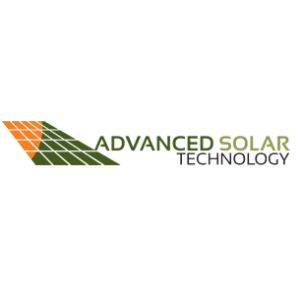Solar PV System - Using the Sun to Power Your Home | advancedsolartechnology.com.auPosted by Adavnced Solar Technology on October 31st, 2022  If you have decided to use solar energy to power your home, you'll probably want to consider a Solar PV System. Photovoltaic panels provide a reliable source of electricity. There are a few factors to consider before putting a Solar PV system up in your home. A shaded PV installation will reduce the output of the panel disproportionately. One shaded cell can consume the power of up to 16 other cells. Reliable photovoltaic installation Perth When it comes to installing solar panels, it is important to choose a company with a proven track record. This company will have the appropriate training and qualifications to ensure you get the best result. It should also have a commitment to customer satisfaction. After all, no one wants to spend money on a photovoltaic system only to be disappointed after the installation. Perth has an ideal climate for solar power installation. The area has about eight hours of sunlight each day. The average temperature rarely falls below five degrees in winter. This makes solar power systems in Perth an ideal choice for people looking to reduce their energy bills. Furthermore, the government offers generous incentives to solar power installers in Perth. These incentives can reduce the cost of initial installation and reward the owners of homes that generate excess electricity. In Perth, solar power systems must withstand the high solar radiation of the western climate. This ensures that they will function efficiently even during the hot summer months. Furthermore, Australian-supported solar power systems come with comprehensive warranties and after-sale support. It is important to find a professional company that is certified to install solar power systems in Perth. Solar power is the future of energy provision in Australia. There are plenty of reasons to make the switch. With the rising price of fuel and other commodities, the demand for alternative energy has increased. As a result, many people have turned to solar power as a source of power for their homes. This industry has grown rapidly in the past few years. While many suppliers have disappeared, there are still reputable suppliers who can provide high-quality systems at affordable prices. These companies offer a wide range of installation services, including expert panel fitting. Residential photovoltaic power supply A Solar PV system can be used for a variety of purposes. For example, it can be used to power a water pump when the sun is shining. However, if the system is used for a whole house, it will need to be continuously operational. This means that it will have to be able to feed both AC and DC loads. Ideally, the system will also have a back-up generator as well. Typical domestic photovoltaic energy systems have two types of inverters. One type has a sine wave output while the other produces a non-sinusoidal output. The latter type is typically cheaper and used for homes with no critical power requirements. An inverter converts the solar-generated electricity to AC power for use in homes. A battery bank is another important component of a stand alone PV system. It stores the power generated by the PV array and can be 12 or 24 volts. The battery bank can store up to several hundred amps of electrical power. The batteries can also be recharged by a small gas or diesel generator if the sun doesn't shine for long periods. There are many different types of photovoltaic power systems. These are typically classified by their operational and functional requirements, component configuration, and connections to other power sources and electrical loads. You can choose a stand-alone system or a utility-interactive system, depending on your needs. Photovoltaic system A Photovoltaic system uses a collection of solar cells to produce direct current (DC) electricity that can either be sent back to the electric grid or be used for household appliances. When solar light strikes the cells, the electrons gain enough energy to bridge the energy bandgap. This energy is then freely available to move within the p-n junction. The resulting current is then harnessed by an external circuit. The PV cell itself is made from a semiconductor material. When photons strike it, they may reflect back or pass through. When they are absorbed, the energy in the photons will be converted to electricity. When this happens, the semiconductor material will absorb enough photons and release electrons from its atoms. When this happens, the free electrons will naturally migrate to the surface of the PV cell, generating electricity. The PV system contains the solar array, the inverters, racking, wiring, circuit breakers, and other components. These components work together to generate electrical power. These components are connected to a power distribution device by means of electric wiring. In some cases, a PV system will require an energy storage device. When it comes to PV systems, there are many different types available. There are grid-connected systems and stand-alone systems. You can also get a system that is entirely DC and is independent of the utility grid. For DC loads, you may need to use a DC-DC converter to boost the voltage and power of the photovoltaic cells. This can help you cut down on the number of solar panels you need. Like it? Share it!More by this author |


